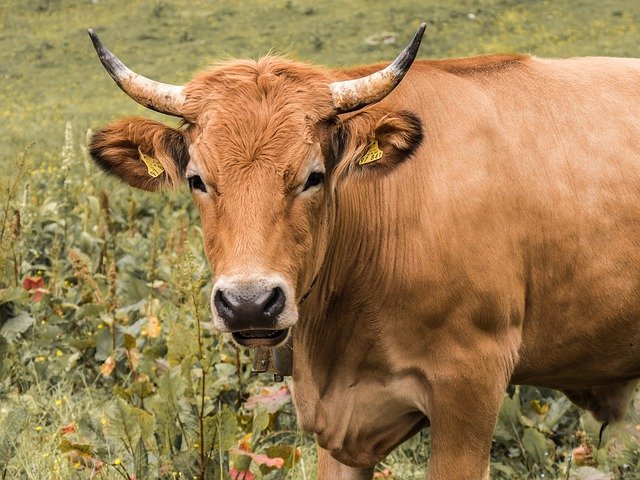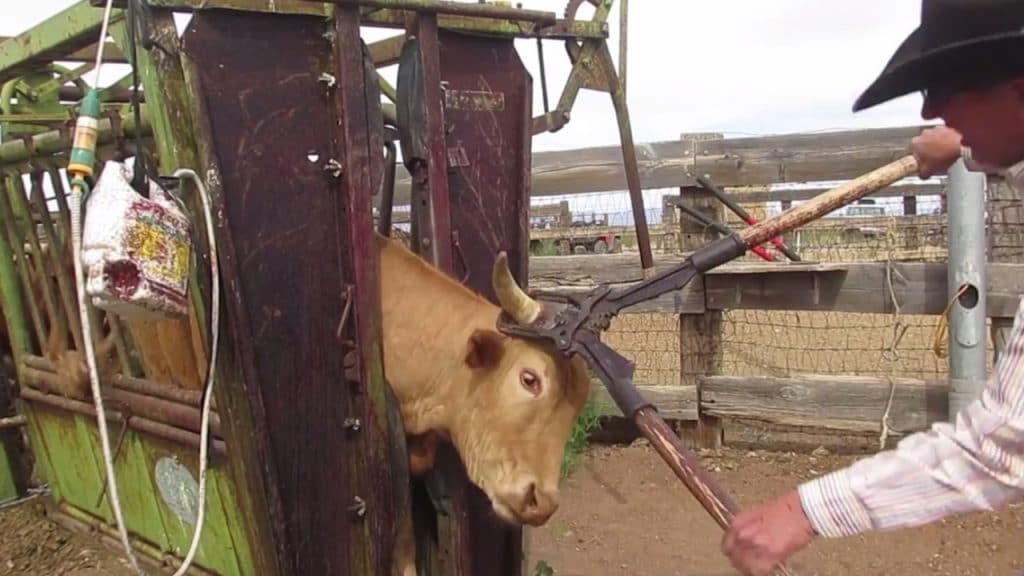What is Dehorning?
Dehorning is the prevention of the growth of horns or the total removal of horns from cattle, goats, and other animals having horns on their heads.
Similarly, disbudding is a related term that simply means the removal of the cells responsible for the production of horns in animals.
Dehorning is the removal of the horn while disbudding is the removal of horn bud thereby preventing the horn from growing.
Dehorning Methods
There are basically two methods of dehorning livestock.
- The mechanical method of dehorning
- The chemical method of dehorning
The mechanical method of Dehorning Animals
The mechanical method of dehorning cattle involves the use of tools or implements, for example, hot iron in the removal of the horns, this is the most popular and effective method of removing horns in animals.
The attachment from which the horn would grow is burned, and the nerves and blood vessels around this area are desolated.
Dehorning calves with hot iron is cruel and painful to the animals since the wound caused by the hot iron takes more 2 to 3 months to heal.
If the mechanical dehorning is not handled by a careful veterinary doctor, it can expose the animal to diseases.
Recently, this practice is now discouraged because the animals suffer a lot through this process, and many advocates for animals’ safety now campaign against it.
Chemical method of Dehorning Animals
The chemical method involves the use of a chemical solution (caustic soda) – the main two components are calcium hydroxide and sodium hydroxide, and the chemical is commonly known as dehorning paste.
Other Methods of Dehorning Cattle and Goats
Electric method
There are other methods of dehorning animals such as the electrical method – This is when you don’t want to burn up the horn bud with a hot iron but rather use electric dehorning iron to remove the horn.
Dehorning saw or clippers
Dehorning saw or clippers are also used in the removal of horns or the prevention of their growth – Saws are used for larger horns while clippers are used for smaller size horns.
Elastrator
Elascrator is used at the base of the horn. it is used for shorthorn – 6cm long in every animal. It is very painful and unpopular.
Surgical wires, tippers, guillotine dehorners are also used to remove large horns from old animals.
When Should Cattle or goats be dehorned?
The time to dehorn an animal, be it goat or cow depends on the method you want to use, and possibly the health of the animal, that is if you prioritize the health of the animal than the safety and the profit potential.
However, dehorning using chemicals should be done on the first or second day of life. The more the animal grows the less effective the use of chemicals.
For electric dehorning or the mechanical method, the horn should have grown out of the head before you can remove it, this should also be done in between 2 – 5 months, depending on the class of the animal.
There is no best method of dehorning animals in my opinion, it all depends on the law guiding animal safety in your state, and the reason you want to dehorn your animal.
For the comfort of the animal, the chemical method is the best, but for the effectiveness of dehorning, the use of hot iron is the best.
The best but not reliable method of dehorning cattle and goats is the breeding of the animals for genetic polledness.
Merit of Dehorning
When animals are dehorned, they become less frightening and easier to handle.
The animals are prevented from injuring themselves with the horn damaging their hides.
Animals occupy less space in the barn when they are dehorned, and that can help to minimize the cost of managing them.
In lyre horn animals, dehorning makes it easier for them to pass through spraying races ( getting rid of ectoparasite)









